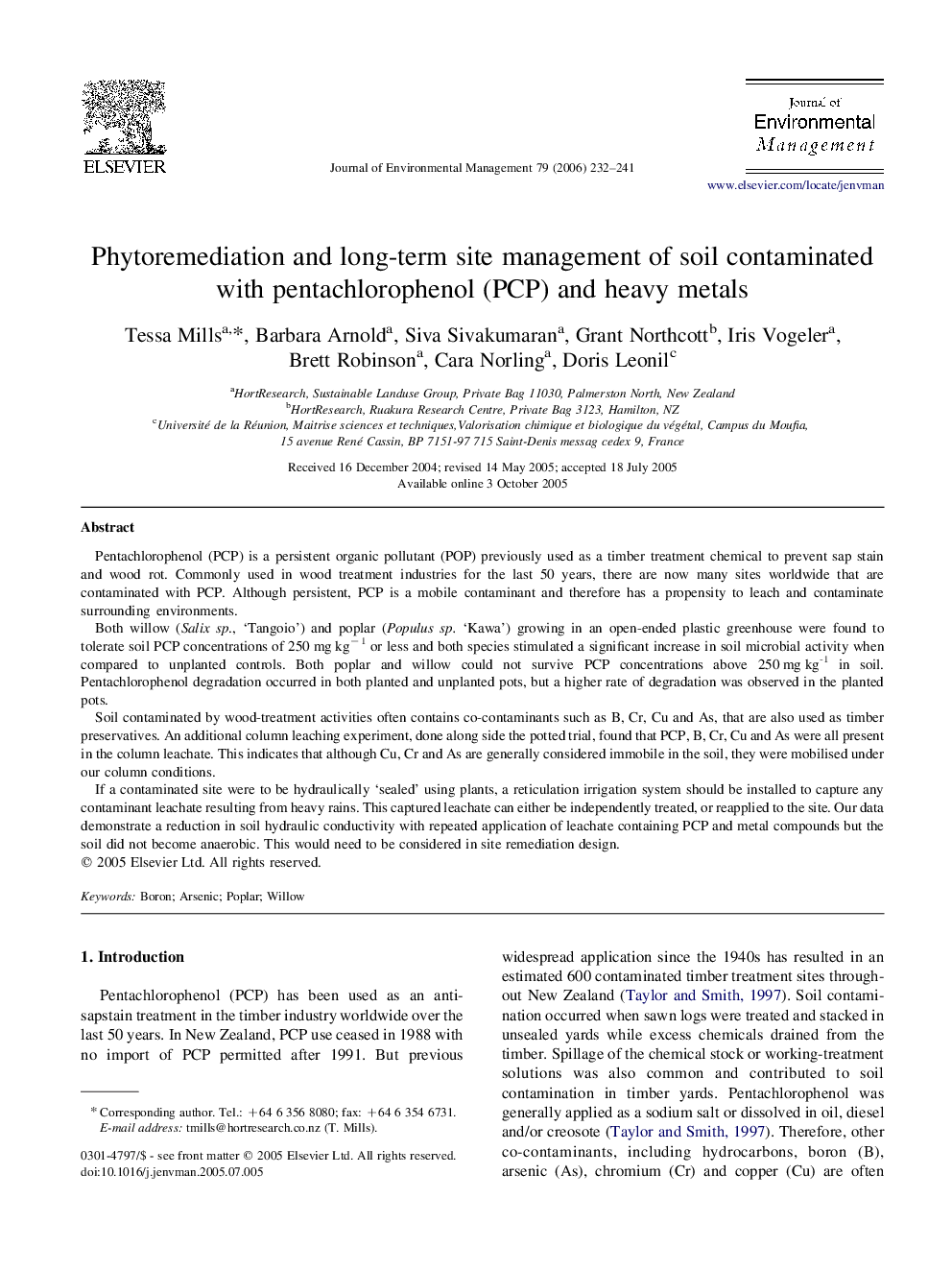| Article ID | Journal | Published Year | Pages | File Type |
|---|---|---|---|---|
| 1058845 | Journal of Environmental Management | 2006 | 10 Pages |
Pentachlorophenol (PCP) is a persistent organic pollutant (POP) previously used as a timber treatment chemical to prevent sap stain and wood rot. Commonly used in wood treatment industries for the last 50 years, there are now many sites worldwide that are contaminated with PCP. Although persistent, PCP is a mobile contaminant and therefore has a propensity to leach and contaminate surrounding environments.Both willow (Salix sp., ‘Tangoio’) and poplar (Populus sp. ‘Kawa’) growing in an open-ended plastic greenhouse were found to tolerate soil PCP concentrations of 250 mg kg−1 or less and both species stimulated a significant increase in soil microbial activity when compared to unplanted controls. Both poplar and willow could not survive PCP concentrations above 250 mg kg-1 in soil. Pentachlorophenol degradation occurred in both planted and unplanted pots, but a higher rate of degradation was observed in the planted pots.Soil contaminated by wood-treatment activities often contains co-contaminants such as B, Cr, Cu and As, that are also used as timber preservatives. An additional column leaching experiment, done along side the potted trial, found that PCP, B, Cr, Cu and As were all present in the column leachate. This indicates that although Cu, Cr and As are generally considered immobile in the soil, they were mobilised under our column conditions.If a contaminated site were to be hydraulically ‘sealed’ using plants, a reticulation irrigation system should be installed to capture any contaminant leachate resulting from heavy rains. This captured leachate can either be independently treated, or reapplied to the site. Our data demonstrate a reduction in soil hydraulic conductivity with repeated application of leachate containing PCP and metal compounds but the soil did not become anaerobic. This would need to be considered in site remediation design.
